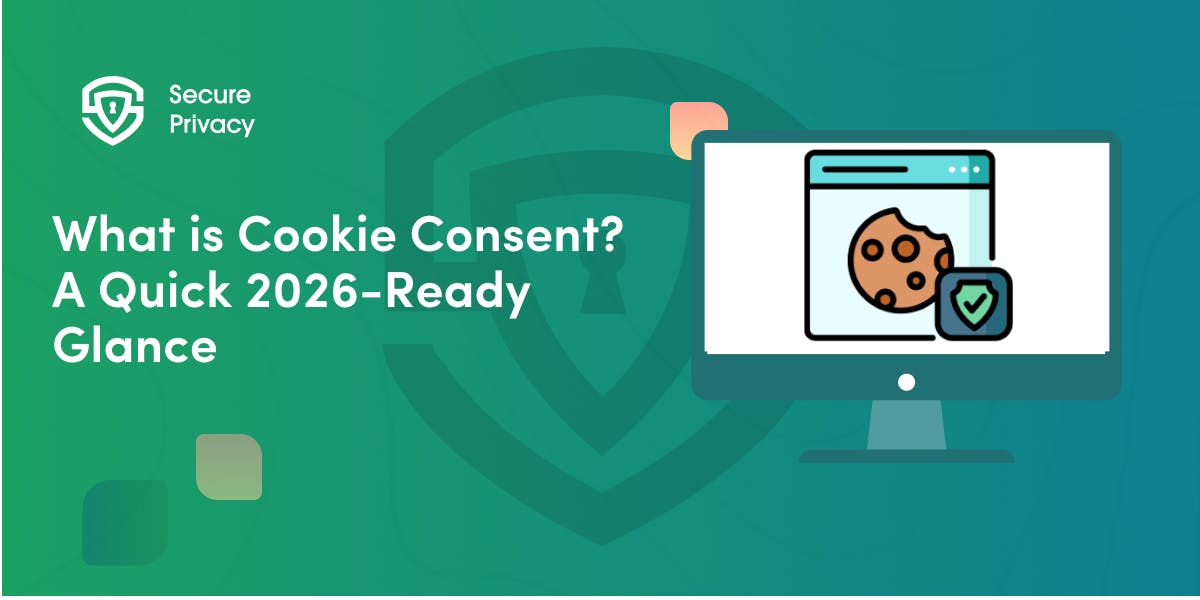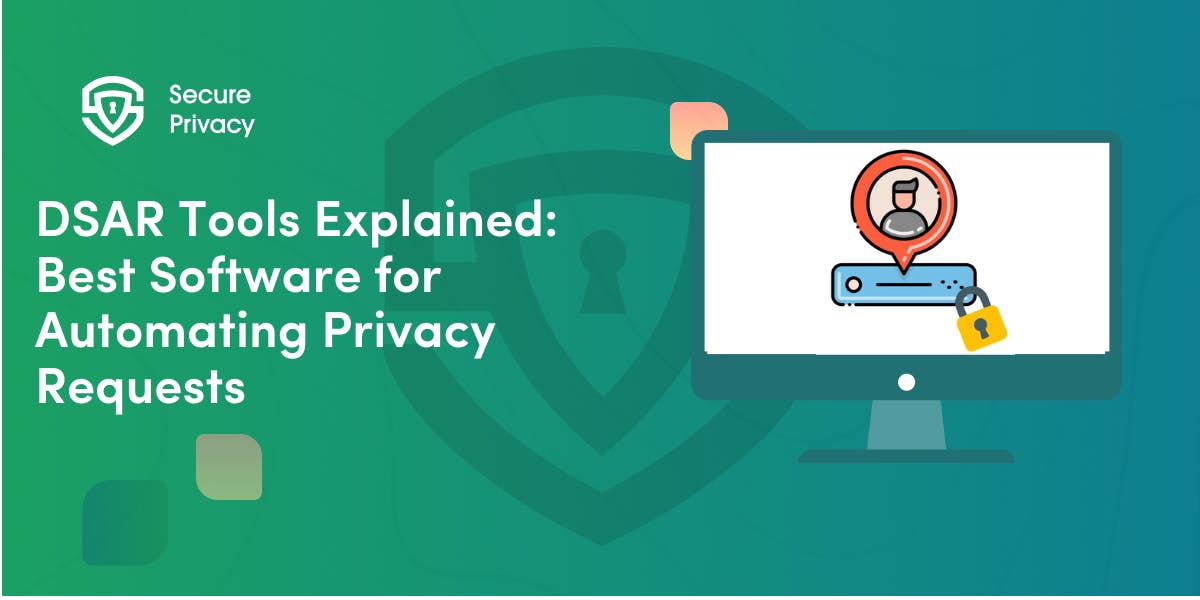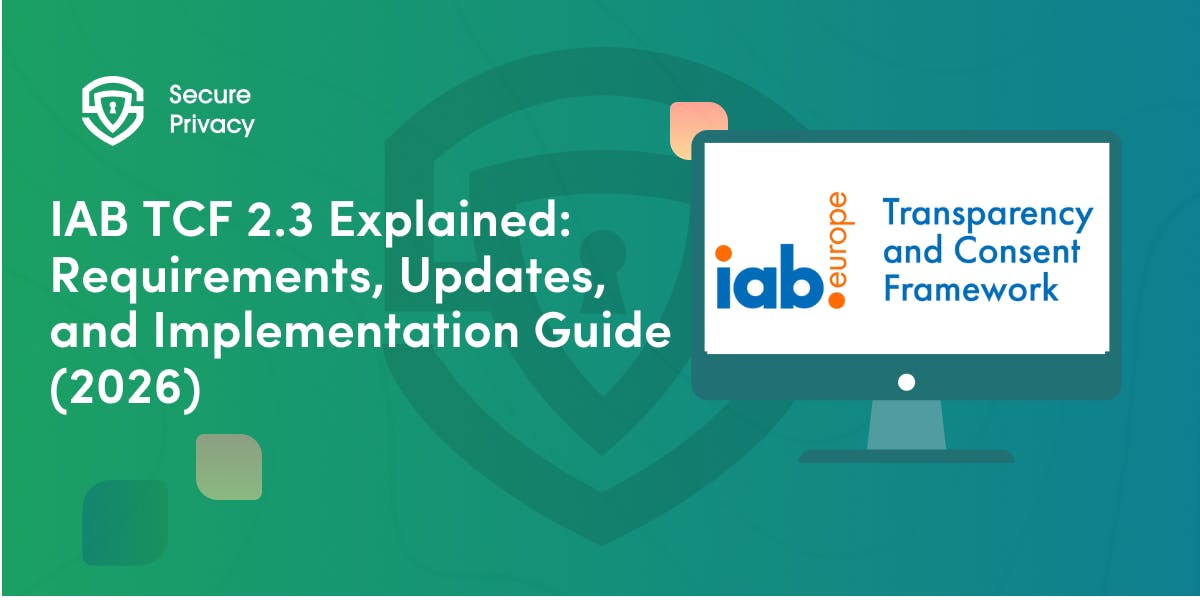Meta Consent Mode Explained: How to Use It for GDPR & CCPA Compliance in 2025
Your Facebook advertising campaigns are about to face their biggest compliance test yet. European regulators just issued €15 million in fines for improper Pixel implementation, while new U.S. state privacy laws are creating a minefield of permission requirements that could devastate your ad performance overnight.
In this comprehensive guide, you'll discover how this privacy framework protects your business from regulatory violations while maintaining advertising effectiveness, and learn the exact implementation strategies that keep your campaigns compliant across all major privacy jurisdictions in 2025.
What Is Meta Consent Mode?
Meta Consent Mode is a privacy framework that enables websites to request user consent before activating Meta Pixel and Conversions API for advertising data collection. This system allows businesses to respect user privacy choices while maintaining conversion tracking and campaign optimization capabilities through advanced statistical modeling when consent is declined.
Unlike traditional cookie banners that simply block all tracking, this privacy framework creates a bridge between compliance and advertising performance. When users grant permission, Facebook tools operate normally with full data collection. When denied, the system switches to privacy-preserving measurement techniques that estimate conversions without compromising individual user privacy.
Key Components include: Facebook Pixel integration with permission controls, CMP coordination, server-side Conversions API implementation, and automated data processing adjustments based on real-time user preferences. This comprehensive approach ensures businesses can maintain GDPR, CCPA, and other privacy law compliance while preserving essential marketing measurement capabilities.
The system represents Facebook's response to increasing regulatory pressure and provides advertisers with a compliant path forward as privacy regulations expand globally. For businesses running advertising campaigns, implementing proper permission management has evolved from a best practice to a legal necessity.
Why Meta Consent Mode Matters in 2025
The regulatory landscape for digital advertising has fundamentally shifted, making Meta Consent Mode essential for business survival. European data protection authorities issued over €2.92 billion in GDPR fines in 2024, with many penalties specifically targeting improper Meta Pixel implementations and advertising data collection practices.
Enforcement has intensified dramatically across multiple jurisdictions. The Austrian DPA ruled that Meta Pixel transfers personal data to the U.S. in violation of GDPR, while Swedish authorities imposed €15 million in fines for pharmacy chains using Facebook Pixel without proper consent. These cases establish that website owners—not Meta—bear primary responsibility for compliance when implementing tracking technologies.
U.S. privacy laws are expanding rapidly, with 19 distinct state privacy regulations taking effect by 2025. Each law contains unique requirements for consent collection, data sharing disclosures, and consumer rights fulfillment, creating compliance complexity that manual approaches cannot handle effectively.
Facebook's enforcement posture has shifted significantly. The platform now restricts data access for non-compliant business tools, pauses campaigns that violate permission requirements, and requires explicit documentation before allowing custom audience uploads. These changes mean non-compliance directly impacts advertising performance and account standing.
The business consequences are severe. Beyond regulatory fines, improper permission implementation triggers campaign restrictions, account suspensions, and loss of valuable advertising data. Companies that fail to implement proper frameworks risk both legal liability and competitive disadvantage as compliant competitors capture market share.
How Meta Consent Mode Works
This privacy framework operates through sophisticated integration between your management system, Facebook's tracking technologies, and privacy-preserving measurement techniques that maintain advertising effectiveness while respecting user choices.
Pixel and Conversions API Integration
The system coordinates both client-side Facebook Pixel tracking and server-side Conversions API data transmission based on real-time user preferences. When users grant advertising permissions, both systems operate at full capacity, collecting behavioral data, conversion events, and optimization signals that power your campaigns.
When permission is denied, the framework automatically adjusts data collection practices. The Pixel switches to privacy-preserving operation, collecting only essential technical information needed for basic functionality while blocking advertising-related data transmission. Simultaneously, your Conversions API implementation filters out personal data elements, sending only aggregated or anonymized conversion signals.
Consent Signal Handling
Real-time consent synchronization ensures immediate response to user privacy choices. When someone updates their consent preferences through your privacy center, the system instantly communicates these changes to all Meta tracking components, preventing unauthorized data collection within seconds of preference changes.
Category-based consent filtering allows granular control over different types of data collection. Users can separately consent to analytics tracking, advertising personalization, and cross-device measurement, giving them precise control while enabling you to maintain some measurement capabilities even with partial consent.
Modeling vs Real Event Tracking
Meta Consent Mode employs advanced statistical modeling to estimate conversion performance when direct tracking is limited. This conversion modeling analyzes aggregated, anonymized data patterns to predict campaign effectiveness without accessing individual user information, maintaining optimization capabilities while respecting privacy choices.
The modeling accuracy depends on the volume of consented users and the sophistication of your implementation. Businesses with proper consent frameworks typically see modeling accuracy rates above 80%, while those with poor consent experiences may experience significant measurement gaps that impact campaign performance.
Key Differences from Google Consent Mode
Unlike Google Consent Mode V2, which focuses primarily on consent signal transmission, Meta Consent Mode emphasizes data filtering and alternative measurement approaches. Google's system continues collecting data while marking it as non-consented, whereas Meta's approach actively prevents unauthorized data collection at the source.
Integration complexity also differs significantly. Meta Consent Mode requires coordination between multiple APIs and tracking methods, while Google's system primarily involves consent signal transmission to existing tracking codes. This difference makes Meta implementations more technically challenging but potentially more privacy-protective.
Required Consent Categories for Meta
Implementing compliant Meta tracking requires understanding the specific consent categories that different privacy regulations mandate for lawful advertising data collection and cross-border data transfers.
Advertising and Marketing Consent represents the primary category needed for Meta Pixel and Conversions API operation. This consent covers behavioral tracking, conversion measurement, audience building, and advertising personalization across Meta's family of platforms including Facebook, Instagram, and WhatsApp.
Analytics and Performance Measurement consent enables conversion tracking, campaign optimization, and performance reporting without necessarily allowing advertising personalization. Some privacy frameworks allow separate consent for measurement versus targeting, giving users more granular control over their data usage.
Cross-Border Data Transfer Consent has become essential following GDPR enforcement actions against Meta's U.S. data transfers. Users must explicitly consent to having their data transmitted to the United States and other non-EU jurisdictions for advertising purposes, with clear explanation of the privacy implications.
Third-Party Data Sharing Consent covers situations where Meta data integrates with other advertising platforms, customer data platforms, or marketing automation systems. This category ensures users understand when their information might be shared beyond Meta's immediate ecosystem.
The specific consent language and categories required vary by jurisdiction, with GDPR requiring the most detailed disclosures and explicit opt-in mechanisms, while some U.S. states allow opt-out approaches with different consent standards.
Technical Implementation
Successful Meta Consent Mode deployment requires coordinating multiple technical components while ensuring seamless user experience and regulatory compliance across all privacy jurisdictions where you operate.
Meta Pixel Setup
Consent-aware Pixel implementation begins with modifying your standard Meta Pixel code to include consent controls that prevent unauthorized data collection before user permission is obtained:
// Initialize Meta Pixel with consent controls
fbq('consent', 'revoke'); // Default to no consent
fbq('init', 'YOUR-PIXEL-ID');
// Only track after consent is granted
if (userConsent.advertising) {
fbq('track', 'PageView');
fbq('track', 'Purchase', {value: orderValue, currency: 'USD'});
}
This implementation ensures no advertising data is collected until explicit user consent is documented and verified through your consent management system.
Consent-Aware Conversions API
Server-side tracking implementation provides maximum control over data transmission while enabling sophisticated consent filtering that adapts to individual user preferences:
// Server-side consent filtering for CAPI
const eventData = {
event_name: 'purchase',
event_time: timestamp,
user_data: userConsent.advertising ? {
email: hashedEmail,
phone: hashedPhone
} : {}, // No personal data without consent
custom_data: {
value: orderValue,
currency: 'USD'
}
};
// Send only if consent allows
if (userConsent.advertising) {
sendToMetaConversionsAPI(eventData);
}
This approach ensures personal data transmission occurs only when users have explicitly consented to advertising use of their information.
CMP Integration with Secure Privacy
Professional consent management requires sophisticated platforms that handle multi-jurisdictional compliance while providing seamless integration with Meta's tracking technologies. Secure Privacy's CMP offers:
Real-time consent synchronization that instantly communicates user preferences to Meta Pixel and Conversions API, preventing any unauthorized data collection gaps during preference updates or consent withdrawals.
Geo-targeted consent experiences that automatically adapt consent requests to local privacy law requirements, ensuring GDPR compliance for European users while respecting different consent standards in various U.S. states.
Advanced consent analytics that help optimize consent acceptance rates while maintaining full compliance, providing insights into user privacy preferences that inform both compliance and marketing strategies.
Cross-Device and Session Syncing
Consent persistence across devices and sessions requires sophisticated coordination between your consent management system and Meta's tracking technologies, ensuring user privacy choices are respected regardless of how they access your digital properties.
Implementation involves secure consent token systems, encrypted preference storage, and real-time synchronization across all customer touchpoints to prevent privacy violations during multi-device customer journeys.
These principles extend to connected platforms including Android TV, where third-party integrations with Meta services require specialized consent signals adapted to non-traditional interfaces.
Consent UX and Banner Best Practices
Creating effective consent experiences requires balancing regulatory compliance requirements with user experience optimization to achieve acceptable consent rates while ensuring genuine informed consent.
Geographic Targeting and Compliance
European Economic Area (EEA) and UK users require explicit opt-in consent with detailed explanations of data processing purposes, clear withdrawal mechanisms, and granular control over different types of data usage including advertising, analytics, and cross-border transfers.
U.S. state compliance varies significantly, with California requiring opt-out mechanisms under CCPA, while Virginia, Connecticut, and other states mandate opt-in consent for sensitive data categories. Your consent system must automatically detect user location and present appropriate consent experiences.
Multi-jurisdictional optimization involves A/B testing consent language, banner designs, and preference center layouts while maintaining compliance with the most restrictive applicable privacy law to ensure legal coverage across all operating regions.
User Experience Design Principles
Clear, non-technical language helps users understand exactly what they're consenting to without overwhelming them with legal jargon or complex privacy concepts that could invalidate their consent decisions.
Granular consent options allow users to separately control advertising tracking, analytics collection, and third-party data sharing, providing the control that modern privacy regulations require while enabling partial consent scenarios.
Mobile-optimized interfaces ensure consent experiences work effectively across all devices and screen sizes, preventing accidental consent decisions that could create legal compliance risks.
Compliance Reporting and Proof
Maintaining comprehensive consent documentation has become essential for demonstrating regulatory compliance during privacy audits and responding to consumer rights requests under various privacy laws.
Logging and Consent Storage
Detailed consent records must include timestamp information, specific consent categories, user IP addresses (where legally permissible), consent method (banner, preference center, etc.), and any subsequent consent modifications or withdrawals.
Tamper-proof audit trails provide cryptographic verification of consent authenticity, preventing disputes about consent validity and ensuring documentation meets regulatory evidence standards during enforcement investigations.
Legal Documentation Integration
Privacy policy synchronization ensures consent language matches your published privacy disclosures, preventing legal inconsistencies that could invalidate consent or create regulatory compliance gaps.
Data processing agreement alignment with Meta's terms and your internal privacy practices creates comprehensive compliance documentation that satisfies both contractual obligations and regulatory requirements.
Meta Consent Mode Pitfalls to Avoid
Understanding common implementation mistakes helps prevent compliance violations and performance issues that could compromise both legal standing and advertising effectiveness.
Implementation Mistakes
Incomplete consent category mapping often occurs when businesses fail to properly categorize all data collection activities, leading to unauthorized processing that violates privacy regulations even with apparent consent systems in place.
Poor fallback behavior for non-consented users can result in broken website functionality or complete loss of measurement capabilities, creating poor user experiences that reduce consent acceptance rates and harm business performance.
Technical Configuration Errors
Delayed consent signal transmission creates windows where unauthorized data collection occurs, exposing businesses to privacy violations even when users have declined consent through properly implemented banners.
Cross-platform synchronization failures between Meta Pixel, Conversions API, and other tracking technologies can result in inconsistent consent application, creating compliance gaps and data quality issues that impact campaign optimization.
Meta Consent Mode with Other Platforms
Modern advertising technology stacks require coordinated consent management across multiple platforms to ensure comprehensive compliance and consistent user experiences.
Integration with Google Consent Mode
Unified consent experiences that handle both Meta and Google tracking requirements reduce user fatigue while ensuring comprehensive compliance across your complete advertising technology stack.
Signal coordination between different consent frameworks prevents conflicting consent states that could confuse users or create technical implementation problems that harm both compliance and performance.
Multi-Vendor Compatibility
Enterprise consent management involves coordinating consent across dozens of advertising, analytics, and marketing automation platforms while maintaining consistent privacy standards and user control mechanisms.
API standardization enables seamless consent signal distribution across your entire marketing technology ecosystem, ensuring no platform operates without proper user consent regardless of implementation complexity.
How Secure Privacy Enables Meta Consent Mode Excellence
Secure Privacy's enterprise consent management platform provides the comprehensive technical capabilities and regulatory expertise needed for sophisticated Meta Consent Mode implementations that balance compliance with performance.
Native Meta Integration includes pre-built connectors for Meta Pixel, Conversions API, and business tools that automatically handle consent signal transmission, data filtering, and compliance documentation without requiring custom development work.
Advanced Geo-Targeting automatically adapts consent experiences to local privacy law requirements, ensuring GDPR compliance for European visitors while respecting different consent standards across various U.S. state privacy laws and international regulations.
Real-Time Consent Analytics provide insights into consent acceptance rates, user privacy preferences, and compliance performance across different geographic regions and user segments, enabling data-driven optimization of both privacy and marketing strategies.
White-Label Solutions allow marketing agencies and enterprise organizations to offer branded consent management services to their clients while leveraging our technical expertise and regulatory knowledge.
Frequently Asked Questions About Meta Consent Mode
What is the difference between Meta Consent Mode and Facebook Pixel consent?
Meta Consent Mode is a comprehensive framework that covers both Meta Pixel and Conversions API implementations, while Facebook Pixel consent typically refers only to client-side tracking consent. Meta Consent Mode provides broader coverage and more sophisticated privacy controls across Meta's complete advertising ecosystem.
Does Meta Consent Mode work with CCPA compliance?
Yes, Meta Consent Mode supports CCPA compliance through Limited Data Use (LDU) features that restrict data sharing when California users opt out of behavioral advertising. However, implementation requires proper geo-detection and consent category mapping specific to California privacy law requirements.
How does Meta Consent Mode affect advertising performance?
When properly implemented, Meta Consent Mode maintains advertising performance through statistical modeling and conversion estimation techniques. Businesses typically see minimal performance impact with consent acceptance rates above 60%, while poor consent experiences can significantly reduce campaign effectiveness.
Can I use Meta Consent Mode with Google Consent Mode V2?
Yes, modern consent management platforms like Secure Privacy enable coordinated implementation of both Meta and Google consent frameworks through unified consent experiences that handle both platforms simultaneously while maintaining user experience quality.
What consent categories are required for Meta advertising?
Essential consent categories include advertising and marketing consent, analytics and performance measurement, cross-border data transfers, and third-party data sharing. Specific requirements vary by jurisdiction, with GDPR requiring the most detailed consent categories and explicit opt-in mechanisms.
How do I implement Meta Consent Mode for healthcare advertising?
Healthcare implementations require the strictest privacy controls, including explicit consent for health-related data collection, server-side only tracking through Conversions API, disabled Advanced Matching to prevent automatic data inference, and regular compliance audits to ensure no sensitive information transmission.
Master Meta Consent Mode Implementation with Expert Support
Meta Consent Mode represents the future of privacy-compliant advertising, enabling businesses to maintain effective campaign performance while respecting user privacy rights and satisfying increasingly complex regulatory requirements across multiple jurisdictions.
Ready to implement Meta Consent Mode correctly? Schedule a consultation with Secure Privacy's consent management experts who specialize in Meta advertising compliance. We'll assess your current implementation, identify compliance gaps, and provide a customized roadmap for achieving full regulatory compliance while optimizing consent acceptance rates.
Need enterprise-grade consent management? Discover how Secure Privacy's platform provides native Meta integration, advanced geo-targeting, real-time consent analytics, and comprehensive compliance documentation that satisfies the most stringent privacy regulations while maintaining advertising performance.
Looking for white-label consent solutions? Explore our agency partnership program that enables you to offer branded Meta consent management services to your clients while leveraging our technical expertise and regulatory knowledge for competitive advantage.
The digital advertising industry's privacy transformation creates unprecedented challenges, but proper Meta Consent Mode implementation positions your business for long-term success in an increasingly privacy-conscious marketplace. Let Secure Privacy help you navigate these changes while building sustainable competitive advantages through privacy excellence.
Get Started For Free with the
#1 Cookie Consent Platform.
No credit card required

What is Cookie Consent? A Quick 2026-Ready Glance
Your website loads. Cookies track users. But without proper cookie consent, you're violating GDPR — risking fines up to €20 million or 4% of global revenue. Cookie consent is the legally required mechanism by which websites obtain explicit user approval before deploying non-essential tracking technologies. This requirement stems from GDPR Article 4(11) and the ePrivacy Directive, mandating that consent must be freely given, specific, informed, and unambiguous.
- Legal & News

DSAR Tools Explained: Best Software for Automating Privacy Requests
You're drowning in data subject access requests. Manual searches through dozens of systems miss regulatory deadlines and expose organizations to fines starting at $2,500 per violation. The solution? DSAR tools — purpose-built software that automates the entire process of responding to data subject access requests, from intake to delivery.
- Legal & News

IAB TCF 2.3 Explained: Requirements, Updates, and Implementation Guide (2026)
Your ad revenue dropped 40% overnight. Google stopped bidding on your inventory. Your DSP partners flagged your traffic as non-compliant. The culprit? An outdated TCF 2.2 consent string after the February 2026 enforcement deadline.
- Legal & News
- Cookie Consent

